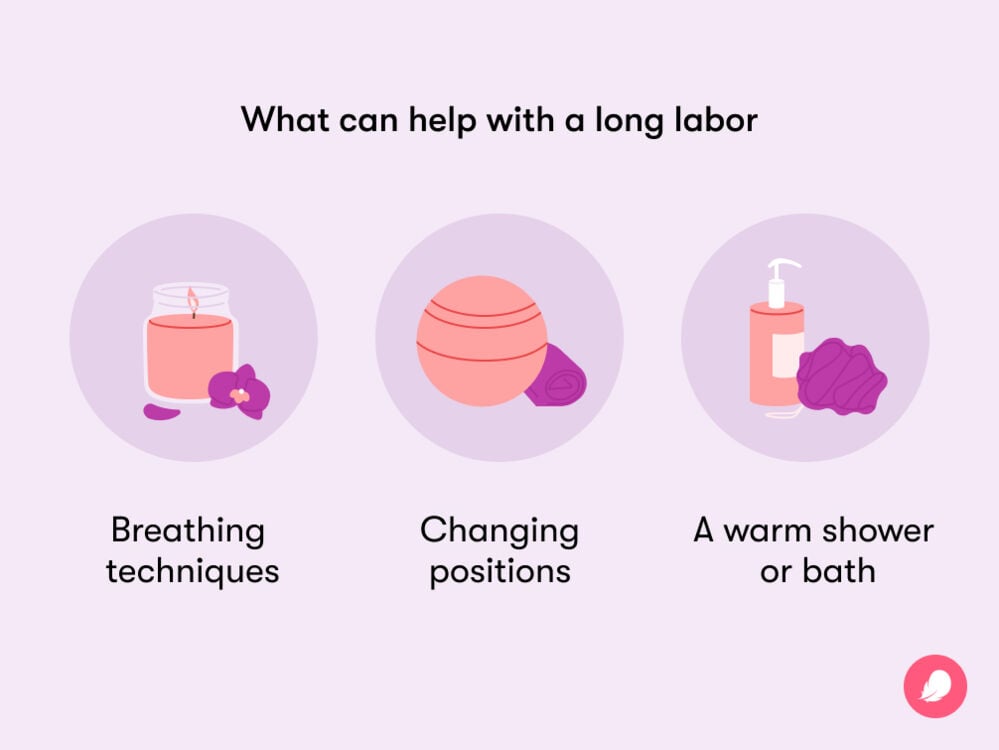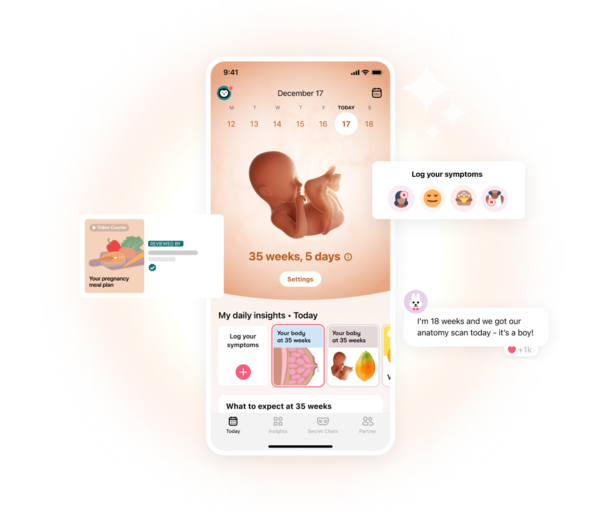Worrying about birth is very normal. We’ve gathered a list of the most common fears women have about vaginal birth and what you can do to help yourself beat them.
-
Tracking cycle
-
Getting pregnant
-
Pregnancy
-
Help Center
-
Flo for Partners
-
Anonymous Mode
-
Flo app reviews
-
Flo Premium New
-
Secret Chats New
-
Symptom Checker New
-
Your cycle
-
Health 360°
-
Getting pregnant
-
Pregnancy
-
Being a mom
-
LGBTQ+
-
Quizzes
-
Ovulation calculator
-
hCG calculator
-
Pregnancy test calculator
-
Menstrual cycle calculator
-
Period calculator
-
Implantation calculator
-
Pregnancy weeks to months calculator
-
Pregnancy due date calculator
-
IVF and FET due date calculator
-
Due date calculator by ultrasound
-
Medical Affairs
-
Science & Research
-
Pass It On Project New
-
Privacy Portal
-
Press Center
-
Flo Accuracy
-
Careers
-
Contact Us
Scared to give birth: 5 common birth fears & how to cope


Every piece of content at Flo Health adheres to the highest editorial standards for language, style, and medical accuracy. To learn what we do to deliver the best health and lifestyle insights to you, check out our content review principles.
Let’s get one thing out of the way: Worrying about birth is super common.
One US study found that nearly half of the women surveyed were nervous about delivering their babies. These worries tend to revolve around vaginal birth, which makes sense since most babies are born vaginally. (Three out of four top birth fears were specifically about vaginal birth in a 2019 Indian study.)
But it also makes sense because vaginal birth, let’s face it, can hurt — a lot. “Almost everyone is nervous about the pain of childbirth. It’s very normal to have these thoughts!” says Dr. Sara Twogood, obstetrician and gynecologist, Cedars-Sinai Medical Group, California, US.
However, in recent years, fears around vaginal birth have led to some significant consequences. A 2020 review of 65 studies found that being afraid of vaginal birth made women more likely to request a C-section (short for cesarean section, i.e., when a baby is born through an incision in the mom’s abdomen and uterus) for no medical reason. But doctors prefer to recommend vaginal birth because C-sections are riskier in both the short and long term.
So what are we all so scared about when it comes to vaginal birth? And what can we do to soothe that anxiety? We’ve gathered a list of the most common fears women have about vaginal birth and what you can do to help yourself beat them.
Birth fear #1: “I won’t be able to cope with the pain.”
This might reassure you: Nearly half of first-time moms who went through labor said it was less painful than they imagined in a 2018 American Society of Anesthesiologists survey.
Sound too good to be true? It’s not, says Dr. Twogood, because labor pain is, well, different. “Other types of pain happen because something is injured or hurt. That’s not the reason with childbirth.” Instead, your body is working to tense — or contract — your uterine muscles to open your cervix (the neck of the uterus) and then to push to give birth to your baby.
And, did you know, whether or not pain medication is part of your plan for birth, “Your body releases natural painkillers to help cope with the pain of labor and delivery,” Dr. Twogood explains.
Feeling better?
It’s also worth remembering you won’t be in pain the entire time. You might not know what contractions feel like, but remind yourself they come and go. You also get a break between each one, lasting around 15 to 20 minutes at first and then two to five minutes right before birth. And even then, contractions only last about 90 seconds.
What can help
Learn about your pain relief options.
When it comes to medication options, the menu is long. Here are some of the most popular options, in order from some to total pain relief:
- Nitrous oxide: also called laughing gas or gas and air, which you breathe in during a contraction to distract you from pain
- Opioids: such as morphine, fentanyl, and remifentanil (usually given via an injection or IV, which helps dull your awareness of pain)
- Local anesthesia or a nerve block: usually an injection to numb the area around your vulva, vagina, and anus right before delivery, an episiotomy (when a doctor makes a cut into your vaginal wall and perineum, the area between your vagina and anus, to make room for your baby to be born safely), or repairing a tear
- Epidural: a tube that’s inserted into your back that’s used to deliver highly effective pain relief medication, removing feeling in your lower half
Get clued up on nonmedical coping mechanisms for pain
These can be used instead of or as well as the medicinal options
- Breathing and visualization techniques: Often taught in childbirth classes but also available to learn online, these can help distract you from pain during contractions.
- Massage: Making use of your birth partner in this way can lower stress and make you feel more relaxed. Counterpressure on your back (having someone press against it) during contractions may also distract you from the pain.
- A warm shower or bath: Lots of people find water soothing — that’s why water births are a popular choice — with studies showing it may help relieve pain and decrease anxiety during the first stage of labor (before you start pushing).
It’s also worth learning about how a fear of pain can actually make it feel more intense. Women who went into childbirth with severe fear were more likely to have a negative birth experience, a 2023 study done in Spain found. One theory about why this happens, according to Dr. Twogood, is that when you feel scared and stressed, it prevents your body from releasing enough of the natural painkillers it otherwise makes.
Dr. Twogood suggests sharing your worries with your health care provider, asking for a consultation with an anesthesiologist (the doctor in charge of pain relief during labor and birth) to talk about your options ahead of time, discussing your fears with a therapist, or all of the above.
Birth fear #2: “I’ll have a really long labor, and I won’t be able to handle it.”
If you’ve heard stories of women being in labor for days on end, you might (understandably) be anxious about this happening to you.
But prolonged labor, which lasts longer than 25 hours for a first vaginal birth, only happens in about 8% of births. (That’s a 92% chance of it NOT happening.)
Also, labor isn’t never-ending (though we know it might feel like it at the time). On average, it lasts 12 to 18 hours for a first vaginal birth and eight to 10 hours if it’s not your first.
What can help

Birth fear #3: “I’ll have a really fast labor, and I won’t get to the hospital in time.”
The idea of a fast and furious labor can be scary. But precipitous labor — the kind of labor that only lasts two or three hours and can result in someone not making it to the hospital or birth center as planned — only happens in three out of every 100 births.
What can help
Your doctor will be able to gauge if you have a higher risk of a fast labor due to things like having a past birth go quickly or having a small baby.
On the practical side, have your hospital bag ready to go. And make sure you know how you’ll get there. (Who will drive? Will you take public transportation? How long will it take at different times of day?)
Also, learn the signs of labor so you can spot them. Most importantly, if your contractions are happening at regular intervals, 60 seconds long and five minutes or less apart, go to the hospital right away.
Birth fear #4: “I won’t be able to handle the uncertainty of when I’ll go into labor.”
Some women request a C-section because they want to be able to control when their baby is born. We get it: Not knowing is hard.
At the same time, there are advantages to waiting to go into labor spontaneously (on your own). It can help decrease the time you spend in the hospital. “It also helps those natural painkillers build up as labor is building up,” Dr. Twogood says, so it might be easier to cope.
What can help
If the anxiety of waiting for labor is causing you distress, consider therapy.
Studies have found that cognitive behavioral therapy (which helps change negative thought patterns) and a therapy called Eye Movement Desensitization and Reprocessing (EMDR) — a technique that helps to process trauma by moving your eyes while talking about past events — can help combat fear and uncertainty about birth.
You can also ask your doctor about potentially having an induction at 39 weeks (or later). Some studies — though they’re far from conclusive — suggest that being induced at 39 weeks might help reduce the risk of needing a C-section for first-time moms who don’t have any health issues.
Your doctor will be able to tell you if induction is a good option for you and will also have the latest data available to help inform your decision.
Take a quiz
Find out what you can do with our Health Assistant
Birth fear #5: “I’ll tear my vagina or need an episiotomy, which will be really hard to recover from.”
Vaginal tears are very common when it’s your first vaginal birth — and sound scary — so it makes sense that this would be on your radar. Up to nine in 10 women will have one.
Minor tears might need stitches and will heal in a few weeks. You’d be numbed with an injection for this and can usually bond with your baby while it’s happening. More severe tears (ones that extend to the anus) are also repaired with stitches and usually take four to six weeks to fully heal. These aren’t very common, though; they happen in just six out of 100 first-time vaginal births.
A lot of people also worry about having an episiotomy (when a doctor makes a cut into your vaginal wall and perineum — the area between your vagina and anus — to make room for your baby to be born safely).
In the United States, doctors are moving away from doing episiotomies unless absolutely necessary. As of 2018, only 4.9% of births involved an episiotomy, according to data from The American College of Obstetricians and Gynecologists (ACOG).
What can help
Perineal massage — a technique that helps stretch your perineum — may make tears less likely. It might even help you heal better if you do have a tear and reduce pain in your perineum after birth.
Check with your provider, but you usually can start perineal massage around 35 weeks pregnant. Ideally, you’d do it a few times a week.
Here’s how: Wash your hands and get into a comfortable position. Use lube or a natural lubricant like olive oil. If you’re doing the massage yourself, use your thumbs. If your partner is doing it, they can use their index fingers.
Press both thumbs or index fingers against the back wall of your vagina toward your anus. You should feel a stretching sensation, but it shouldn’t be painful. Gently make a U-like motion with both thumbs. Do this for a couple of minutes — and that’s it!


Hey, I'm Anique
I started using Flo app to track my period and ovulation because we wanted to have a baby.


The Flo app helped me learn about my body and spot ovulation signs during our conception journey.


I vividly
remember the day
that we switched
Flo into
Pregnancy Mode — it was
such a special
moment.
Real stories, real results
Learn how the Flo app became an amazing cheerleader for us on our conception journey.
References
Poggi, Léa, et al. “When Fear of Childbirth Is Pathological: The Fear Continuum.” Maternal and Child Health Journal, vol. 22, no. 5, May 2018, pp. 772–78, doi: 10.1007/s10995-018-2447-8.
“Caesarean Section Rates Continue to Rise, amid Growing Inequalities in Access.” World Health Organization, 16 June 2021, www.who.int/news/item/16-06-2021-caesarean-section-rates-continue-to-rise-amid-growing-inequalities-in-access
“Method of Delivery.” Centers for Disease Control and Prevention. 8 June 2023, www.cdc.gov/nchs/fastats/delivery.htm.
Johnson, Avita Rose, et al. “Fear of Childbirth among Pregnant Women Availing Antenatal Services in a Maternity Hospital in Rural Karnataka.” Indian Journal of Psychological Medicine, vol. 41, no. 4, July–Aug. 2019, pp. 318–22, doi:10.4103/IJPSYM.IJPSYM_292_18.
Coates, Dominiek, et al. “What Are Women’s Mode of Birth Preferences and Why? A Systematic Scoping Review.” Women and Birth: Journal of the Australian College of Midwives, vol. 33, no. 4, July 2020, pp. 323–33, doi:10.1016/j.wombi.2019.09.005.
“Safe Prevention of the Primary Cesarean Delivery. Obstetric Care Consensus No. 1. American College of Obstetricians and Gynecologists.” Obstetrics and Gynecology, vol. 123, no. 1, Mar. 2014, pp. 693–711, www.acog.org/clinical/clinical-guidance/obstetric-care-consensus/articles/2014/03/safe-prevention-of-the-primary-cesarean-delivery.
“Worried about the Pain of Labor and Delivery? It’s Not as Bad as You Think!” American Society of Anesthesiologists, 7 May 2018, www.asahq.org/about-asa/newsroom/news-releases/2018/05/pain-of-labor-and-delivery.
“Stages of Labor.” Cleveland Clinic, my.clevelandclinic.org/health/symptoms/22640-stages-of-labor. Accessed 6 Oct. 2023.
“Medications for Pain Relief during Labor and Delivery.” The American College of Obstetricians and Gynecologists, Dec. 2022, www.acog.org/womens-health/faqs/medications-for-pain-relief-during-labor-and-delivery.
Petruska, Sara E. “Making Sense of Childbirth Pain Relief Options.” The American College of Obstetricians and Gynecologists, Feb. 2022, www.acog.org/womens-health/experts-and-stories/the-latest/making-sense-of-childbirth-pain-relief-options.
“Nonpharmacologic Labor Pain Management.” Mass General Brigham, Newton-Wellesley Hospital, www.nwh.org/patient-guides-and-forms/maternity-guide/maternity-chapter-3/comfort-measures-during-labor-and-delivery-non-pharmacological-methods. Accessed 6 Oct. 2023.
Shaw-Battista, Jenna. “Systematic Review of Hydrotherapy Research: Does a Warm Bath in Labor Promote Normal Physiologic Childbirth?” The Journal of Perinatal and Neonatal Nursing, vol. 31, no. 4, 2017, pp. 303–16, doi:10.1097/JPN.0000000000000260.
Markfelder, Tobias, and Paul Pauli. “Fear of Pain and Pain Intensity: Meta-Analysis and Systematic Review.” Psychological Bulletin, vol. 146, no. 5, May 2020, pp. 411–50, doi:10.1037/bul0000228.
Rúger-Navarrete, Azahara, et al. “Antenatal Fear of Childbirth as a Risk Factor for a Bad Childbirth Experience.” Healthcare, vol. 11, no. 3, Jan. 2023, p. 297, doi.org/10.3390/healthcare11030297.
“Prolonged Labor (Failure to Progress).” Cleveland Clinic, my.clevelandclinic.org/health/diseases/24752-prolonged-labor. Accessed 6 Oct. 2023.
“How to Tell When Labor Begins.” The American College of Obstetricians and Gynecologists, May 2020, www.acog.org/womens-health/faqs/how-to-tell-when-labor-begins.
Issac, Alwin, et al. “Effectiveness of Breathing Exercise on the Duration of Labour: A Systematic Review and Meta-Analysis.” Journal of Global Health, vol. 13, Mar. 2023, p. 04023, doi:10.7189/jogh.13.04023.
“Labor Positions.” Mayo Clinic, 28 July 2023, www.mayoclinic.org/healthy-lifestyle/labor-and-delivery/in-depth/labor/art-20546804.
“Labour Positions.” NHS Inform, 25 Jan. 2023, www.nhsinform.scot/ready-steady-baby/labour-and-birth/labour/labour-positions.
“Immersion in Water during Labor and Delivery. Committee Opinion No. 679, American College of Obstetricians and Gynecologists.” Obstetrics and Gynecology, vol. 128, no. 679, 2016, pp. e231–6, www.acog.org/clinical/clinical-guidance/committee-opinion/articles/2016/11/immersion-in-water-during-labor-and-delivery.
Sheiner, Eyal, et al. “Precipitate Labor: Higher Rates of Maternal Complications.” European Journal of Obstetrics, Gynecology, and Reproductive Biology, vol. 116, no. 1, Sep. 2004, pp. 43–47, https://doi.org/10.1016/j.ejogrb.2004.02.006.
“Precipitous Labor.” Cleveland Clinic, my.clevelandclinic.org/health/articles/24258-precipitous-labor. Accessed 6 Oct. 2023.
“What Happens at the Hospital or Birth Centre.” NHS, www.nhs.uk/pregnancy/labour-and-birth/signs-of-labour/what-happens-at-the-hospital-or-birth-centre/. Accessed 12 Oct. 2023.
Miller, Nathaniel R., et al. “Elective Induction of Labor Compared With Expectant Management of Nulliparous Women at 39 Weeks of Gestation: A Randomized Controlled Trial.” Obstetrics and Gynecology, vol. 126, no. 6, Dec. 2015, pp. 1258–64, doi:10.1097/AOG.0000000000001154.
Martin, Colin R., et al. “Chapter 4: Childbirth-Related Fear, Tokophobia, and Cognitive Behavioral Therapy.” Handbook of Lifespan Cognitive Behavioral Therapy, edited by Colin R. Martin et al. Academic Press, 2023, pp. 41–51.
“Overview: Cognitive Behavioural Therapy (CBT).” NHS, www.nhs.uk/mental-health/talking-therapies-medicine-treatments/talking-therapies-and-counselling/cognitive-behavioural-therapy-cbt/overview/. Accessed 6 Oct. 2023.
“Treatment: Post-Traumatic Stress Disorder.” NHS, www.nhs.uk/mental-health/conditions/post-traumatic-stress-disorder-ptsd/treatment/. Accessed 6 Oct. 2023.
“Perineal Tears during Childbirth.” Royal College of Obstetricians and Gynaecologists, www.rcog.org.uk/for-the-public/perineal-tears-and-episiotomies-in-childbirth/perineal-tears-during-childbirth/. Accessed 6 Oct. 2023.
“First- and Second-Degree Tears.” Royal College of Obstetricians and Gynaecologists, www.rcog.org.uk/for-the-public/perineal-tears-and-episiotomies-in-childbirth/first-and-second-degree-tears/. Accessed 6 Oct. 2023.
“Third- and Fourth-Degree Tears (OASI).” Royal College of Obstetricians and Gynaecologists, www.rcog.org.uk/for-the-public/perineal-tears-and-episiotomies-in-childbirth/third-and-fourth-degree-tears-oasi/. Accessed 6 Oct. 2023.
Logue, Teresa C., and Alexander Friedman. “In Reply: Trends in and Factors Associated with Episiotomy in the Setting of Nonoperative Vaginal Delivery, 2000–2018.” Obstetrics and Gynecology, vol. 139, no. 4, Apr. 2022, pp. 695, doi: 10.1097/AOG.0000000000004743.
Abdelhakim, Ahmed Mohamed, et al. “Antenatal Perineal Massage Benefits in Reducing Perineal Trauma and Postpartum Morbidities: A Systematic Review and Meta-Analysis of Randomized Controlled Trials.” International Urogynecology Journal, vol. 31, no. 9, Sep. 2020, pp. 1735–45, doi:10.1007/s00192-020-04302-8.
Beckmann, Michael M, and Stock, Owen M. “Antenatal Perineal Massage for Reducing Perineal Trauma.” Cochrane Database of Systematic Reviews, vol. 4, no. 4, Apr. 2013, doi: 10.1002/14651858.CD005123.pub3.
“Will Perineal Massage Keep You From Tearing during Childbirth?” Cleveland Clinic, 9 Jan. 2023, health.clevelandclinic.org/perineal-massage/.
“Antenatal Perineal Massage.” NHS Foundation Trust: Cambridge University Hospitals, 15 Apr. 2021, www.cuh.nhs.uk/patient-information/antenatal-perineal-massage-explained/.
History of updates
Current version (09 February 2024)
Published (09 February 2024)
In this article

Get your personal guide to pregnancy with the Flo app
-
Follow your baby's growth week by week
-
Get expert info on symptoms, safe foods, and more
-
Chat with other parents-to-be




